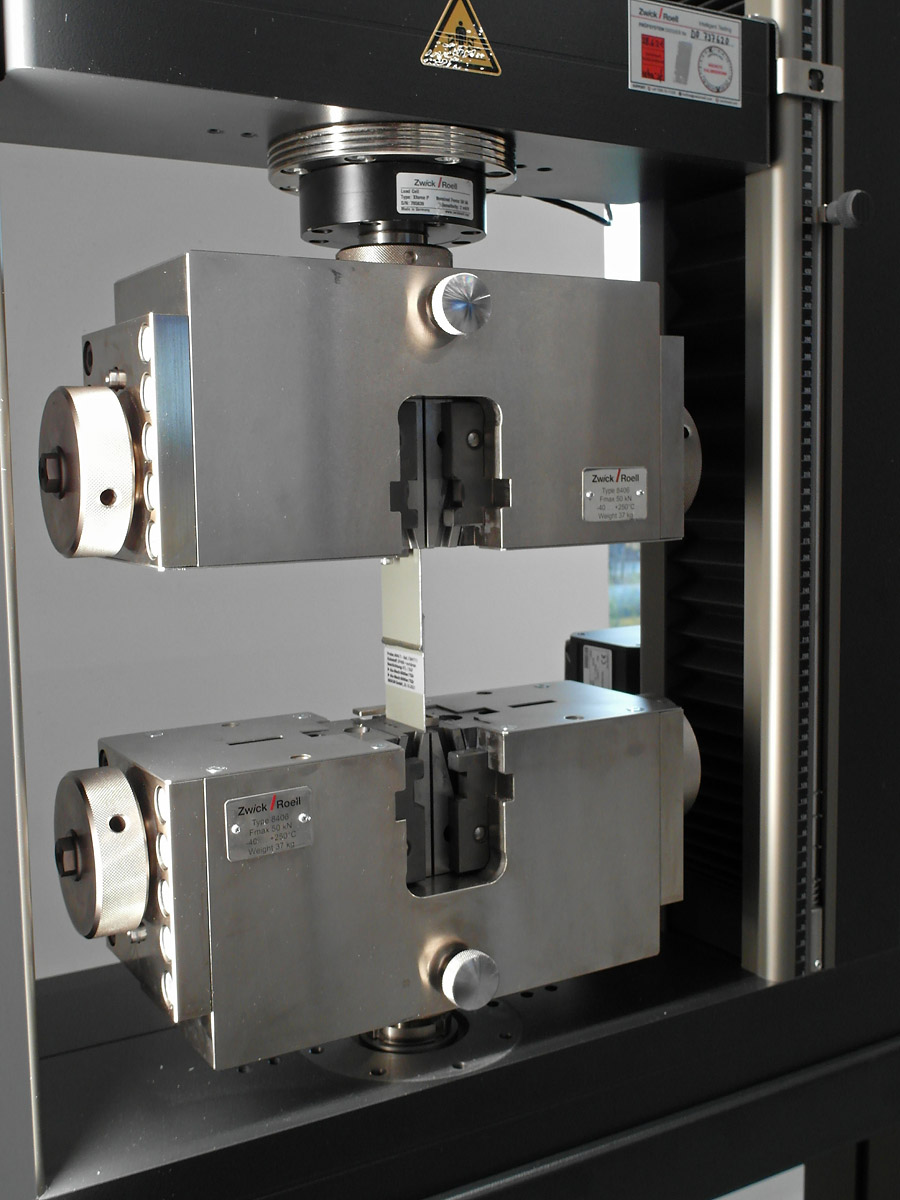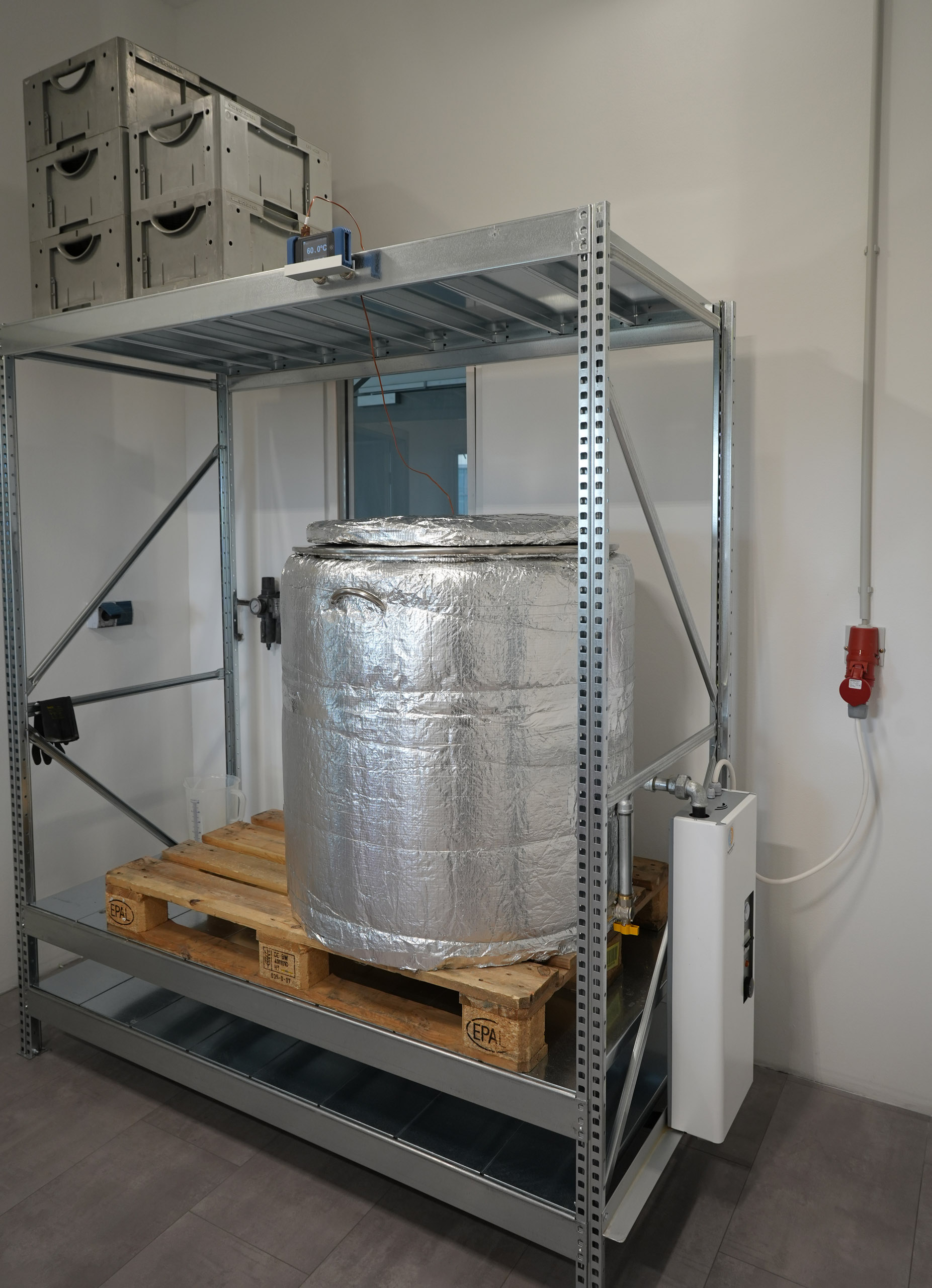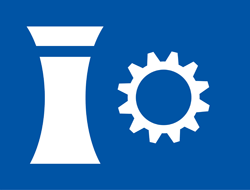Technical laboratory
The technical laboratory of IBEKOR GmbH combines corrosion testing, environmental simulation and qualification of adhesive joints with practical test methods and measuring techniques. Test programmes are based on DIN EN ISO standards and customer-specific requirements – complemented by a clear technical interpretation of the results.
Corrosion testing & environmental simulation
For evaluating coating and corrosion protection systems, the laboratory provides defined corrosion and climate tests:
- Salt spray testing according to DIN EN ISO 9227 (NSS) for comparative assessment of coating systems.
- Cyclic corrosion testing according to DIN EN ISO 11997-1, cycle B (formerly VDA 621-415) for realistic environmental loading.
- Constant condensation climate according to DIN EN ISO 6270-2 (CH) for long-term humidity exposure.
- Alternating condensation climate according to DIN EN ISO 6270-2 (AHT) with cyclic temperature and humidity profiles.
- Natural weathering in the urban/industrial climate of Munich according to DIN EN ISO 927-3 as a field reference to laboratory testing.
- Immersion tests in various media and temperature levels to analyse corrosion mechanisms in a targeted manner.
Evaluation is based on defined criteria (creep, blistering, corrosion morphology) and is supported by detailed photographic documentation.

Qualification of adhesive joints
Structural adhesive joints are prepared under defined conditions, exposed to climatic stress if required and mechanically tested:
- Preparation of adhesive specimens with defined boundary conditions: oiling level, overlap length and bondline thickness.
- Oven curing cycles in a laboratory circulating air oven reflecting e-coat oven profiles with steep heating ramps.
- Determination of lap shear strength of overlap joints according to DIN EN ISO 1465.
- Systematic evaluation of fracture surfaces into adhesive, cohesive and corrosion-induced delamination areas.
- Lap shear tests using a 50 kN universal testing machine from ZwickRoell with symmetric and asymmetric clamping.
- Qualification of combined punch-rivet/adhesive joints (punch riveting with adhesive) including failure mode analysis.
- Peel tests performed according to customer-specific test specifications.

Test methods & measuring equipment
In addition to corrosion and adhesive testing, the following methods and measuring techniques are used:
- Low-contamination specimen preparation using a metal band saw (up to 1000 m/min) with automatic table feed.
- Ultrasonic cleaning in suitable organic solvents for the removal of residual contamination.
- Cross-cut testing for coatings from 1 to 250 µm in accordance with DIN EN ISO 2409.
- Measurement and logging of circulating air and specimen temperature using type-T thermocouples (including oven temperature curve).
- Gravimetric measurements with a resolution of 0.1 mg, e.g. for mass loss or oil film quantification.
- Optical microscopy using stereo and metallographic setups with digital camera for documenting coating and fracture surfaces.
- Coating thickness measurements based on magnetic induction and eddy current methods on various substrates.
Test reports are structured and supplemented with micro- and macro-photographs so that they can be directly integrated into your quality documentation.

Our videos provide a quick impression of the laboratory, test setups and our way of working:
